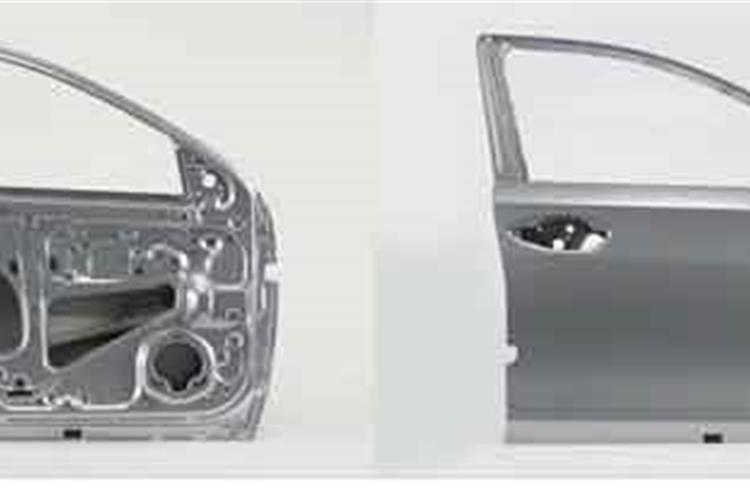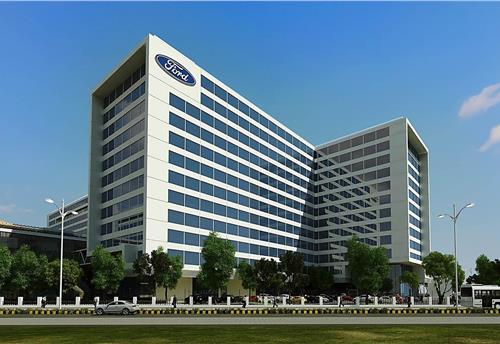Honda develops new tech to join steel and aluminium with world's first application to the door panel of mass production vehicles
Tokyo, February 25, 2013: Honda Motor Co has announced that it has newly developed a technology to join steel and aluminium and applied it to enable adoption of aluminium for an outer door panel, which has conventionally been made of steel.
To join together the dissimilar metals of steel and aluminium, the simultaneous establishment of several different technologies was required such as technologies to prevent corrosion (electrical corrosion) and thermal deformation caused by the different expansion rates of steel and aluminum.
Honda newly developed three technologies that enabled adoption of aluminum for the outer door panel.
 |
Technology to join dissimilar materials: Adoption of ‘3D Lock Seam’ structure, where the steel panel and aluminum panel are layered and hemmed together twice. [See figure above].
Technology to prevent electrical corrosion: Adoption of highly anti-corrosive steel for the inner panel and a new form that assures the complete filling of the gap with adhesive agent. [See figure below]
 |
Technology to control thermal deformation: Adoption of adhesive agent with low elastic modulus and optimised position of the 3D Lock Seam.
The advantages of these new technologies include elimination of a spot welding process required to join conventional steel door panels. Moreover, these technologies do not require a dedicated process; as a result, existing production lines can accommodate these new technologies.
The new technology contributes to the improvement of fuel economy and dynamic performance of the vehicle by reducing door panel weight by approximately 17 percent compared to the conventional all-steel door panel. In addition, weight reduction at the outer side of the vehicle body enables to concentrate the point of gravity toward the centre of the vehicle, contributing to improved stability in vehicle maneuvering.
Honda has been making a number of efforts to further reduce vehicle weight. In 2012, with the North American version of the all-new 2013 Accord, Honda began mass-production of a front sub-frame featuring the steel-aluminium hybrid structure that was made possible by the Friction Stir Welding (FSW) technology.
 |
RELATED ARTICLES
Uniproducts India targets 15% growth till FY2027, eyes new EV OEMs for NVH parts
The Noida-headquartered company, which is a leading manufacturer of roof liners, floor carpets, sound insulation materia...
Ford to build more EV software capability at Chennai tech hub
Ford Business Solutions India, which currently employs 12,000 personnel set to add 3,000 more; Ford, which is known to b...
ASK Automotive to set up JV with Aisin to sell aftermarket parts for cars
Ask Automotive will have 51% of the equity of the joint venture to be set up with Aisin Asia (Thailand) Company and Aisi...





 By Autocar Pro News Desk
By Autocar Pro News Desk
 25 Feb 2013
25 Feb 2013
 4790 Views
4790 Views









